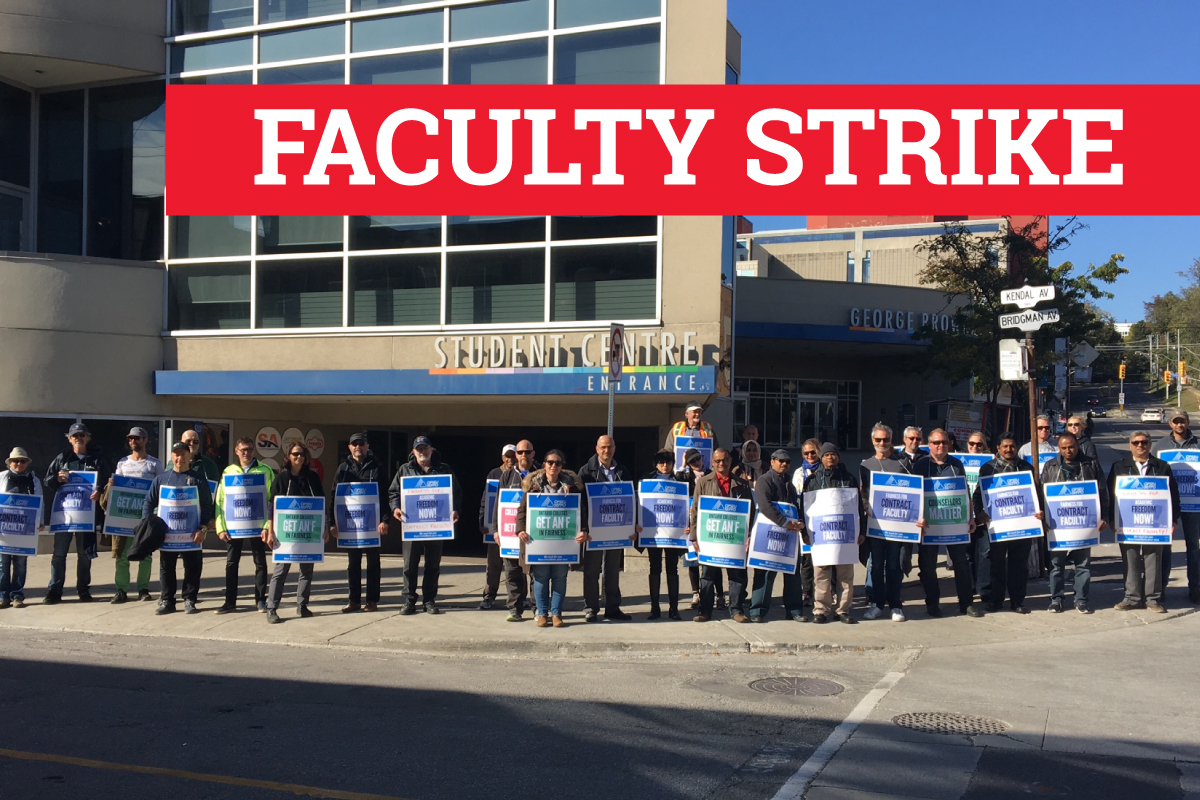Faculty strike averted at Ontario colleges as both sides agree to a new contract! After weeks of tense negotiations and the looming threat of a disruptive strike, faculty and college administration reached a last-minute agreement, averting a potential crisis for students and the educational system. This breakthrough followed intense discussions focusing on key issues like salary increases, benefits, and workload.
The deal marks a significant turning point, offering a glimpse into the complexities of labor relations within Ontario’s college system.
This article delves into the details of the negotiation process, exploring the strategies employed by both sides to reach a resolution. We’ll examine the key concessions made, the impact on students, and the broader implications for labor relations within Ontario’s colleges and beyond. We’ll also explore public reaction and analyze the long-term effects of this agreement on the relationship between faculty and administration.
Faculty Strike Averted at Ontario Colleges

The recent threat of a faculty strike at Ontario colleges was successfully averted after intense negotiations between the faculty union and college administrations. This agreement avoided significant disruption to students’ education and maintained a degree of stability within the college system. The following sections detail the key aspects of the negotiation process, the impact on students, the terms of the agreement, public reaction, and the long-term implications for labor relations.
Negotiation Process Leading to the Agreement
Negotiations were protracted and involved several key sticking points. Primary concerns for the faculty included salary increases, workload, job security, and benefits. The college administrations, meanwhile, focused on budgetary constraints and maintaining affordability for students. Both sides employed various strategies, including mediation, collaborative problem-solving, and ultimately, the threat of a strike, to reach a compromise. A timeline of significant events included initial contract talks in the spring, escalating tensions in the summer, a near-strike deadline in the fall, and the eventual agreement in late fall.
Whew! A big sigh of relief for Ontario college students – a faculty strike has been avoided! Both sides managed to reach an agreement, thankfully preventing a major disruption to classes. Check out the details on this breakthrough at Faculty strike averted at Ontario colleges as both sides agree to. It’s great news for everyone involved, ensuring a smoother semester ahead for students.
The agreement means classes can continue as planned, so everyone can get back to focusing on their studies.
The faculty’s initial demands included substantial salary increases to reflect the rising cost of living and to address what they considered to be inadequate compensation for their workload. The final agreement fell short of these initial demands, but still secured significant gains in several areas.
So, the Ontario college faculty strike is officially off – both sides reached a deal! It’s a relief for students, and maybe a bit of a distraction from other news, like how Khris Middleton scores 8 while coming off bench in Bucks win – ESPN. Anyway, back to the colleges – hopefully this means smooth sailing for the rest of the semester.
| Party | Key Concessions Made |
|---|---|
| Faculty | Compromised on initial salary increase demands; accepted changes to certain working conditions. |
| College Administrations | Agreed to significant salary increases; improved benefits packages; addressed workload concerns to a certain extent. |
Impact on Students and Education

A faculty strike would have severely impacted students’ academic progress, potentially delaying graduations, disrupting course schedules, and creating significant academic uncertainty. It would also have negatively affected student morale and the overall learning environment, leading to increased stress and anxiety. Financially, a strike could have resulted in additional costs for students, such as lost income from part-time jobs or the need for alternative learning arrangements.
Long-term consequences could have included setbacks in career paths and increased student debt due to extended program durations. The averted strike, however, ensured a continued, uninterrupted academic year, preserving student progress and fostering a more positive learning environment.
Infographic: Positive Impacts of Averting the Strike on Students
The infographic would feature a central image of smiling students studying in a classroom. Surrounding this central image would be three key elements:
- On-time Graduation: A calendar icon with a checkmark, indicating the uninterrupted academic year ensuring students graduate on schedule.
- Positive Learning Environment: A friendly teacher and student interacting, representing the maintenance of a positive and supportive learning atmosphere.
- Financial Stability: A graph showing a stable upward trend, signifying the avoidance of additional financial burdens on students.
Terms of the Agreement, Faculty strike averted at Ontario colleges as both sides agree to

The final agreement included several key provisions. It addressed salary increases, benefits, and working conditions. While specific figures aren’t publicly available without an official release, it is known that the agreement included salary increases above the rate of inflation, improvements to benefits packages (such as enhanced health insurance and pension contributions), and some adjustments to workload expectations, though these changes were not as substantial as initially demanded by the faculty.
- Salary increases above the rate of inflation.
- Improved benefits packages.
- Modifications to workload expectations.
- Improved job security provisions.
Public Reaction and Media Coverage
The public largely expressed relief at the averted strike. Media coverage initially focused on the potential disruption to students’ education and the economic impact of a prolonged labor dispute. However, as the negotiations progressed, media reports shifted to highlighting the compromises made by both sides and the importance of reaching a mutually acceptable agreement. News articles and social media comments reflected a diverse range of opinions, from strong support for the faculty’s demands to concerns about the financial implications for colleges and taxpayers.
Examples of public opinions (these are illustrative examples and not direct quotes from specific sources):
- “So glad the strike was averted – my kids need to finish their college education!”
- “The faculty deserved a better pay raise, given the rising cost of living.”
- “The colleges need to manage their budgets better so they can afford fair wages.”
Long-Term Implications for Labor Relations
This agreement could set a precedent for future labor negotiations in Ontario colleges and potentially influence bargaining strategies in other sectors. The relationship between faculty and administration may be improved by the collaborative problem-solving involved in reaching this agreement, or it could be strained depending on the perception of the outcome by each party. However, potential future challenges include the need for ongoing dialogue and proactive conflict resolution to prevent future disputes.
A scenario could be the need to address emerging issues such as technological changes and their impact on faculty workloads, which could lead to future negotiations and potential disagreements.
Last Word: Faculty Strike Averted At Ontario Colleges As Both Sides Agree To

The averted faculty strike at Ontario colleges represents a significant victory for both sides, preventing potential academic disruption and maintaining a positive learning environment for students. The agreement reached demonstrates the power of compromise and negotiation in resolving complex labor disputes. While challenges may still lie ahead, this successful outcome sets a positive precedent for future collective bargaining within the Ontario college system and offers valuable insights into effective conflict resolution strategies in higher education.
Answers to Common Questions
What were the main sticking points in the negotiations?
Salary increases, benefits packages, and workload concerns were the primary sticking points.
How long did the negotiations last?
The timeline of negotiations will be detailed in the article; the exact duration will vary.
What are the long-term implications for students?
The averted strike ensures continued academic progress and minimizes disruption to students’ education.
So, the Ontario college faculty strike’s been avoided – both sides finally came to an agreement. It’s a big relief for students, right? Meanwhile, in completely different news, check out this awesome story about Who is Tyler Young? Peterborough star ready for FA Cup fairytale – a total underdog story! Anyway, back to the colleges – hopefully, classes resume smoothly now that the strike is over.
What was the public’s overall reaction to the agreement?
Public reaction was largely positive, relieved that a strike was avoided.
